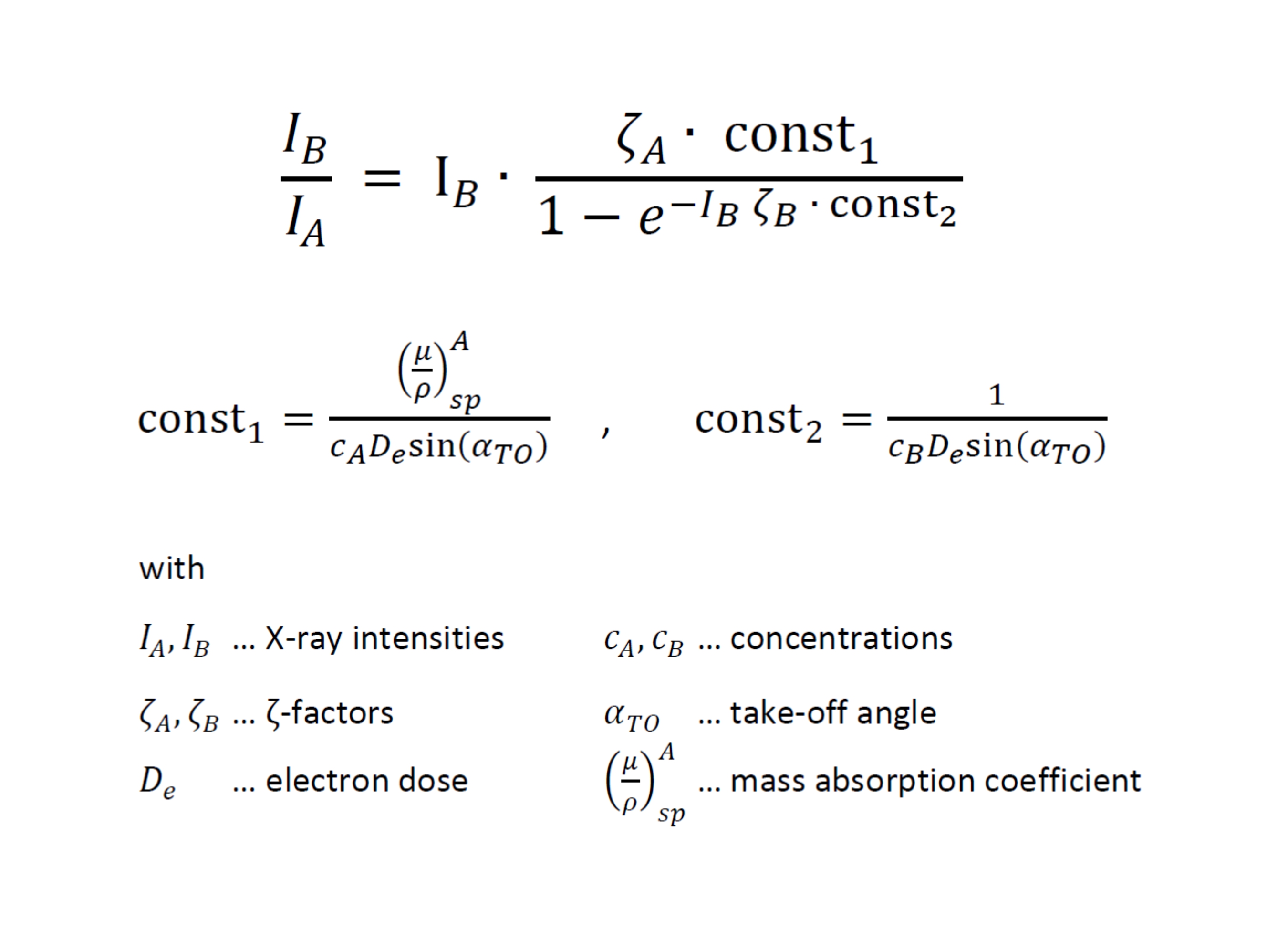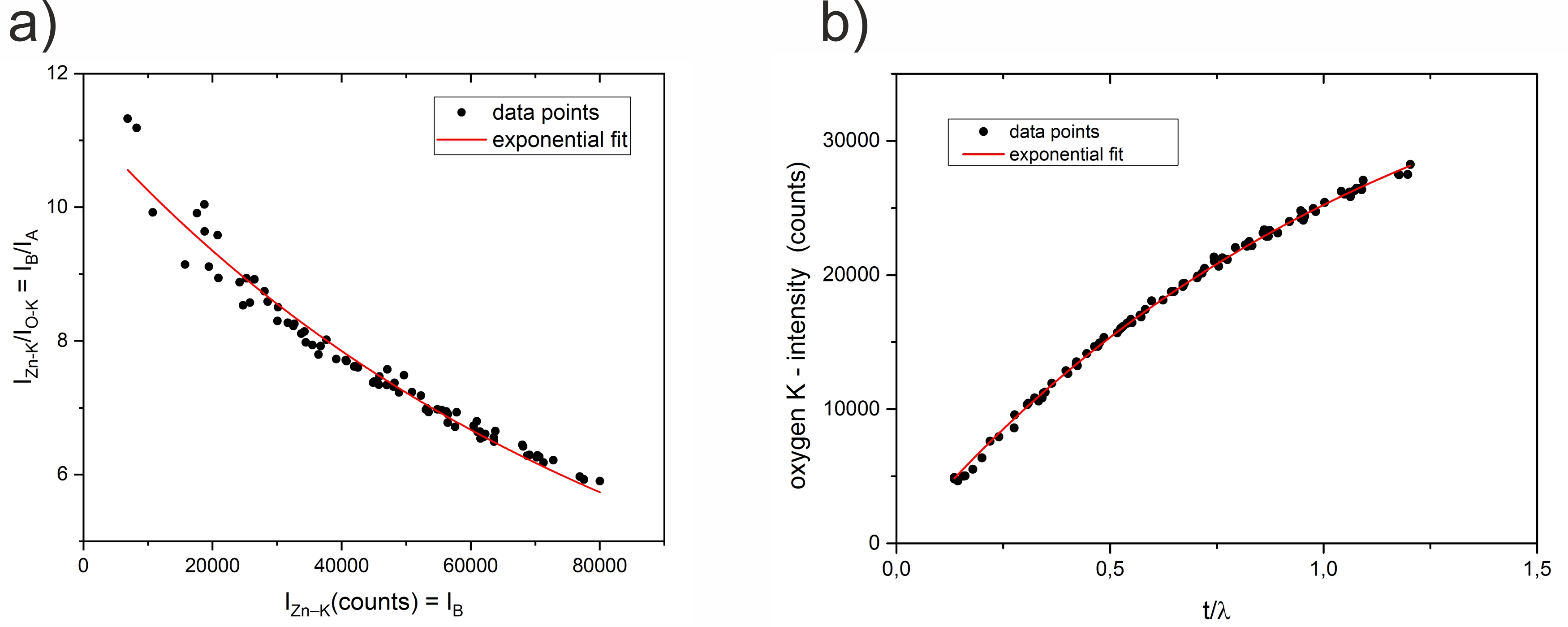EDX quantification in the TEM: How to measure ζ-factors without knowing the sample thickness
- Abstract number
- 734
- Event
- Virtual Early Career European Microscopy Congress 2020
- Presentation Form
- Submitted Poster
- DOI
- 10.22443/rms.emc2020.734
- Corresponding Email
- [email protected]
- Session
- PST.4 - Spectroscopies in Electron, X-ray and Ion Microscopy
- Authors
- Nikolaus Rauch (1), Judith Lammer (1), Sebastian Rauch (1), Martina Dienstleder (1), Werner Grogger (1)
- Affiliations
-
1. Institute of Electron Microscopy and Nanoanalysis (FELMI), Graz University of Technology & Graz Centre for Electron Microscopy (ZFE)
- Keywords
ζ-factor, EDXS, light elements, TEM, thickness, quantification
- Abstract text
Within this abstract, we present a new way to determine 𝜁-factors for EDXS quantification experimentally for both light and heavy elements. With this approach, we eliminate the necessity of knowing the thickness of the reference sample, which is very often a crucial issue during 𝜁-factor determination.
The correct determination of the element concentration in a material via energy-dispersive X-ray spectrometry (EDXS) stands or falls on the precision of the quantification method. There are two established methods within the TEM community: the conventional Cliff-Lorimer technique [1] and the newer 𝜁-factor method [2]. The latter provides not only elemental concentrations but also the mass-thickness of the observed specimen area as results. Furthermore, a proper absorption correction for low energy X-rays is implemented, which makes it more accurate for the quantification of light elements. A precondition for using this method is the determination of correct sensitivity factors, the so-called 𝜁-factors. However, the determination of accurate values for light elements is a complex and challenging task, which is the reason, why the method is unfortunately not as commonly used as suspected regarding its major advantage of a built-in absorption correction.
One major drawback during the experimental acquisition of 𝜁-factors is the fact that the thickness of the reference sample must be known. This either limits the researcher to reference materials with known thickness or brings in an additional uncertainty in thickness measurement.
To overcome the problem of absorption effects during 𝜁-factor acquisition Marvel et al. [3] recently applied an imaginative ansatz: They used binary systems – where the heavier element possesses a non-absorbing (high-energy) X-ray line and its 𝜁-factor is known, while the X-ray line of the light element is strongly affected by absorption – and measured intensities of both X-ray lines on several thicknesses of the sample. Afterwards they plotted the k-factor over the non-absorbing X-ray line to obtain a graph called ‘Horita-plot’ [4]. Extrapolating the exponential fit to zero thickness yields the absorption-free k-factor and – if one 𝜁-factor is already known – the 𝜁-factor for the other element.
We took up this idea and expanded the approach of using exponential fits in Horita-plots in order to determine both 𝜁-factors without knowing the actual thickness of the sample. We did this through rearranging the physical expression for the intensity of an X-ray peak and linking it to the fitting parameters of the exponential fits in Horita-plots (fig. 1).
We used three samples (SiO2, SiC and ZnO) with different absorption properties. We measured X-ray spectra at several thicknesses and plotted the intensities using Horita-plots (fig. 2a). Thereafter, we performed an exponential fit and calculated the 𝜁-factors from the fitting parameters. The accuracy of the fitting parameters - and subsequently of the 𝜁-factors - benefits from large absorption values. We determined adequate limits for mass absorption coefficients and take-off angles in order to a priori choose reasonable samples and experimental conditions.
In addition, we modified the Horita-plots and used t/λ-values obtained from electron energy loss spectroscopy as independent parameters for the thickness on the abscissa (fig. 2b). Using these relative thickness values further improved the accuracy of the obtained 𝜁-factors. When doing so, one does not only retrieve the 𝜁-factors for both X-ray lines, but also the inelastic mean free path of the sample.
With this work we contribute to the aim of EDXS becoming more feasible and accurate for the quantification of light elements: we used the absorption effect of low X-ray lines to our advantage and brought up a simple way to determine ζ-factors of both light and heavy elements at a time without knowing the sample thickness [5].
Figure 1: The ratio of two X-ray intensities IA and IB from the elements A and B – where IA is partially absorbed within the specimen, while IB does not suffer from absorption – describes the exponential behaviour within a Horita-plot. This relation depends on both ζ-factors and several parameters, which are summarized as two constants in the equation. If all parameters are known, the ζ-factors for both elements can be obtained from the fitting parameters of the exponential fit as given in fig. 2a.
Figure 2: a) Horita-plot: intensity-ratio over non-absorbed intensity (sample ZnO). ζ-factors are obtained from the fitting parameters of the exponential fit. b) Modified Horita-plot: intensity of the absorbed X-ray line over the t/λ values (sample ZnO).
- References
[1] G Cliff and GW Lorimer, Journal of Microscopy 103 (1975), p. 203–207
[2] M Watanabe and DB Williams, Journal of Microscopy 221 (2006), p. 89–109
[3] CJ Marvel et al, Ultramicroscopy 202 (2019), p. 163–172
[4] Z Horita et al, Journal of Microscopy 143 (1986), p. 215–231
[5] The support of the European Union Horizon 2020 programme (grant 823717–ESTEEM3) is gratefully acknowledged.


